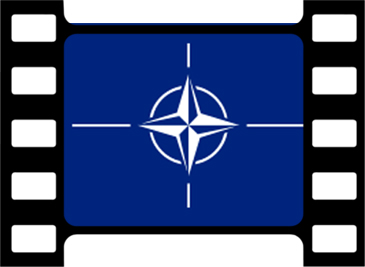The Story Of NATO, As Hollywood Tells It
By Steven Pate in Arts & Entertainment on May 16, 2012 7:20PM
 This week, the military arm of the Western world reaches out to give the third largest city in the U.S. a hug. That tightness you feel right around the exclusionary zone, that’s normal. The NATO summit brings representatives of 50 countries, masses of protesters, sound cannons, riot-ready security personnel, and a question: what do we think of when we think about NATO? Before it became synonymous with "colossal headache for residents and anybody working downtown," we mean? Let’s ask the movies.
This week, the military arm of the Western world reaches out to give the third largest city in the U.S. a hug. That tightness you feel right around the exclusionary zone, that’s normal. The NATO summit brings representatives of 50 countries, masses of protesters, sound cannons, riot-ready security personnel, and a question: what do we think of when we think about NATO? Before it became synonymous with "colossal headache for residents and anybody working downtown," we mean? Let’s ask the movies.
After its formation in 1949, the notion of the North Atlantic Treaty Organization was deeply intertwined with carrying over the goodwill enjoyed by the allied forces in the second world war, with the goal of preventing global conflict taken for granted as the entity’s governing principle. This 28 minute educational feature, Big Picture: Why NATO?, produced by the U.S. Military and narrated by Edward R. Murrow, gives a great idea of the organization’s perception in the 1950s:
On the big screen, NATO quickly became a proxy for the Western powers’ unified resistance to the perceived threat of communism and Soviet empire. Before long, it seemed to be an easy cinematic stand-in for international cooperation against anything bad. In James Bond films from 1965’s Thunderball to 1983’s Never Say Never Again, NATO was often the target for super-evil entities like SPECTRE.
The notion of NATO remained fuzzy enough to add international scope to spy thrillers like Alfred Hitchcock’s Topaz as if waving a magic wand. Even as the treaty organization ostensibly governed much of the first world’s military coordination, the bulk of any heroic (or villainous) storylines were given to national entities like individual nation’s armies, the CIA or the KGB. NATO was cast as the international face of the bureaucracy of warfare. To convey that Art Garfunkel's supremely creepy voyeur is a spy in Nicolas Roeg's Bad Timing, it is enough to have "those NATO people" referenced in a telephone message. Goldie Hawn's Private Benjamin is about an American's experience in the American military, but when she crosses a superior, it is to the unsexy nether parts of a NATO post she is banished:
With the Bosnian War of 1992, NATO forces began a new era of active military intervention. NATO's bombs weren't limited to the former Yugoslavia, either. 2001's terrible Owen Wilson action vehicle Behind Enemy Lines was based on the (true) story of Scott O'Grady, an Air Force fighter pilot shot down while patrolling the Bosnian no-fly zone who evaded enemy patrols and was rescued by the Marines after nearly six days in the Serbian wilderness. Nobody was there to rescue any audiences who paid to see the movie.
After Bosnia, NATO followed up with military interventions in Kosovo and Afghanistan. Surprisingly perhaps, Angelina Jolie has proven to be as active as any in Hollywood when it comes to portraying this most recent chapter of NATO's story. Her lone directorial effort, In the Land of Blood and Honey is set against the backdrop of the Bosnian war, the plot her 2010 action thriller Salt hinges on a spy disguised as a NATO liason and she even says she has written an Afghanistan war movie. The Afghanistan War has been in the background of some mediocre films, such as Rendition and In the Valley of Elah, and even a few decent ones, such as Jim Sheridan's Brothers. But with the conflict ongoing, the best place to turn is probably still the widely-released Tim Hetherington and Sebastian Junger's documentary Restrepo:
What, in the end, has Hollywood told us about NATO? Not all that much. It remains as bland as its acronym, as vague and impersonal as the stock ticker symbol of a multinational corporate holding company. You say NATO to most movie nerds, and they'll think you're talking about the National Association of Theatre Owners.
This is perhaps to be expected from within the NATO sphere of influence. While there are plenty of journalists and filmmakers on the antiwar left (you might start with The Weight of Chains by the "Serbian Michael Moore," Boris Malagurski) who will paint a picture of the entity as the war machine of global capital on the one hand, and no shortage of NATO-focused commercials for war on the other, the group on the whole retains a blurrier cinematic profile than other acronymically-enabled entities like the CIA, the KGB, or even the UN.
The glory of acts of heroism or valor are still associated with the constituent military forces, with NATO there only to diffuse the blame if something goes wrong or to tie together a conspiracy theory. All of this allows us to project onto it whatever aspects of international conflict we choose to, without ever making much of a dent in its "brand," a state of affairs we can't help but believe has served NATO's member states quite well.
What will the on-screen reputation of NATO be after a sojurn in the Windy City? We'll just have to wait and find out.